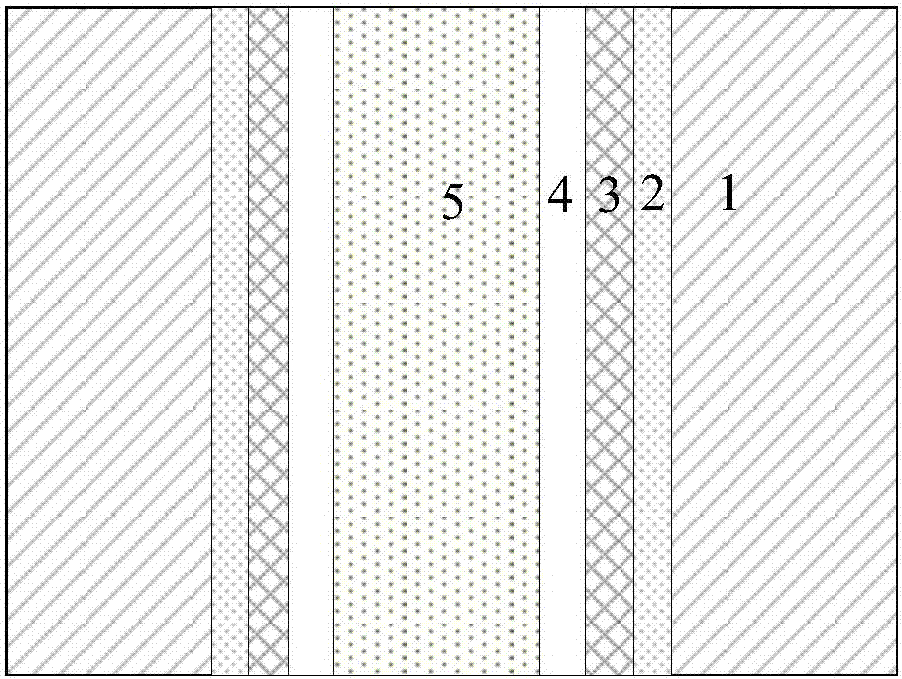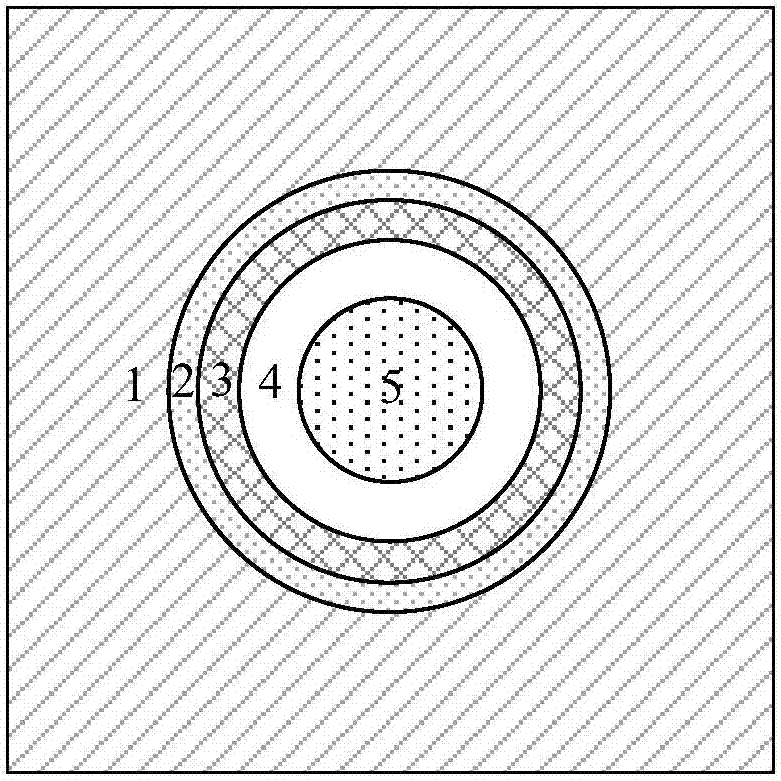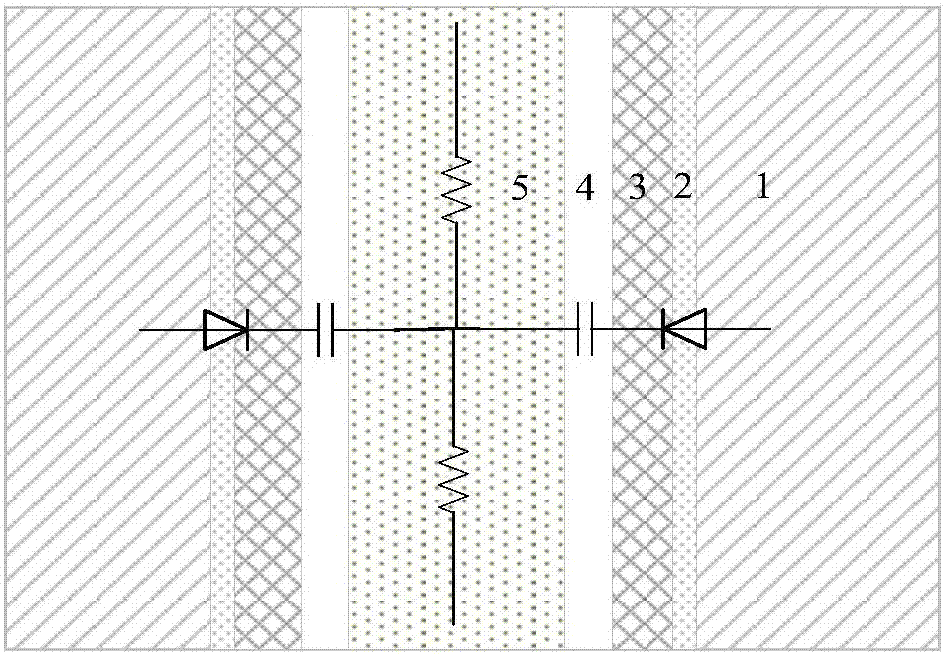A through-silicon via structure based on a pn junction and its manufacturing method
A manufacturing method and a technology of through-silicon vias, which are applied in semiconductor/solid-state device manufacturing, electrical components, and electrical solid-state devices, can solve problems such as troublesome use and grounding, reduce the use of metals, improve thermomechanical reliability, and high Effects of High Frequency Signal Integrity
- Summary
- Abstract
- Description
- Claims
- Application Information
AI Technical Summary
Problems solved by technology
Method used
Image
Examples
Embodiment 1
[0058] Step 1, selecting a P-type doped silicon substrate as the substrate 1;
[0059] Step 2, using reactive ion method to etch a through hole penetrating through the upper and lower surfaces of the substrate 1 on the substrate 1, the radius of the through hole is 2.6 μm;
[0060] Step 3, preparing an N-type doped layer 3 on the inner surface of the through hole formed by etching in step 2;
[0061] Specifically follow the steps below:
[0062] Step 3.1, using a constant surface source diffusion method to deposit impurity atoms on the inner surface of the through hole formed by etching in step 2;
[0063] Step 3.2: Put the substrate 1 deposited with impurity atoms in step 3.1 into a horizontal diffusion furnace by means of limited surface source diffusion. The temperature of the horizontal diffusion furnace is 950° C. The substrate 1 is diffused to form an N-type doped layer 3, and the surface concentration and doping depth of the N-type doped layer 3 are 0.5 μm.
[0064] ...
Embodiment 2
[0068] Step 1, selecting a P-type doped silicon substrate as the substrate 1;
[0069] Step 2, using reactive ion method to etch a through hole penetrating through the upper and lower surfaces of the substrate 1 on the substrate 1, the radius of the through hole is 4 μm;
[0070] Step 3, preparing an N-type doped layer 3 on the inner surface of the through hole formed by etching in step 2;
[0071] Specifically follow the steps below:
[0072] Step 3.1, using a constant surface source diffusion method to deposit impurity atoms on the inner surface of the through hole formed by etching in step 2;
[0073] Step 3.2: Put the substrate 1 on which impurity atoms have been deposited in step 3.1 into a horizontal diffusion furnace by means of limited surface source diffusion. The temperature of the horizontal diffusion furnace is 1000° C. The substrate 1 is diffused to form an N-type doped layer 3, and the surface concentration and doping depth of the N-type doped layer 3 are 1 μm....
Embodiment 3
[0078] Step 1, selecting a P-type doped silicon substrate as the substrate 1;
[0079] Step 2, using reactive ion method to etch a through hole penetrating through the upper and lower surfaces of the substrate 1 on the substrate 1, the radius of the through hole is 6 μm;
[0080] Step 3, preparing an N-type doped layer 3 on the inner surface of the through hole formed by etching in step 2;
[0081] Specifically follow the steps below:
[0082] Step 3.1, using a constant surface source diffusion method to deposit impurity atoms on the inner surface of the through hole formed by etching in step 2;
[0083] Step 3.2: Put the substrate 1 on which impurity atoms have been deposited in step 3.1 into a horizontal diffusion furnace by means of limited surface source diffusion. The temperature of the horizontal diffusion furnace is 1050° C. The substrate 1 is diffused to form an N-type doped layer 3, and the surface concentration and doping depth of the N-type doped layer 3 are 1.5 μ...
PUM
 Login to View More
Login to View More Abstract
Description
Claims
Application Information
 Login to View More
Login to View More - R&D
- Intellectual Property
- Life Sciences
- Materials
- Tech Scout
- Unparalleled Data Quality
- Higher Quality Content
- 60% Fewer Hallucinations
Browse by: Latest US Patents, China's latest patents, Technical Efficacy Thesaurus, Application Domain, Technology Topic, Popular Technical Reports.
© 2025 PatSnap. All rights reserved.Legal|Privacy policy|Modern Slavery Act Transparency Statement|Sitemap|About US| Contact US: help@patsnap.com



